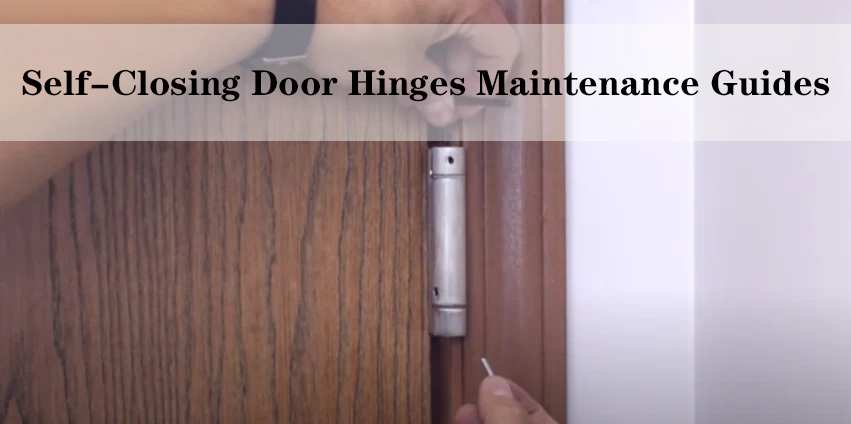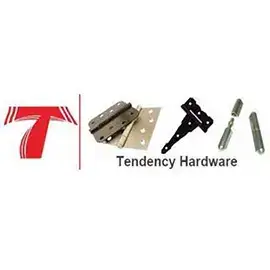When it comes to kitchen cabinet hardware, one component that often goes unnoticed but plays a crucial role in everyday functionality is the cabinet door hinge. Cabinet hinges are responsible for ensuring smooth opening and closing of cabinet doors, allowing easy access to stored items. Among the various types of cabinet hinges available in the market, soft close cabinet hinges have gained significant popularity in recent years.
Soft close cabinet hinges are designed to provide a gentle and controlled closing motion for cabinet doors. Unlike traditional cabinet hinges that can slam shut with a loud noise, soft close hinges offer a quieter and more seamless experience. These innovative hinges utilize hydraulic or pneumatic mechanisms that slow down the closing action, preventing any accidental slamming or damage to both the door and the surrounding cabinetry.
The importance of soft close cabinet hinges extends beyond just noise reduction. They also contribute to improved safety by preventing fingers from getting caught between rapidly closing doors. This is particularly beneficial in households with children or elderly individuals who may be more prone to accidents.
Additionally, soft close hinges help prolong the lifespan of your cabinets by reducing wear and tear caused by forceful impacts when doors slam shut. By providing a cushioned closing motion, these hinges help maintain the structural integrity of your cabinetry over time.
In conclusion, understanding soft close cabinet hinges is crucial for anyone looking to enhance their kitchen’s functionality and safety. These specialized hinges offer a range of benefits including noise reduction, increased safety, and extended durability for your cabinets. Whether you are renovating your kitchen or simply looking to upgrade your existing cabinetry hardware, considering soft close cabinet hinges is an investment well worth making.
Common Causes of Soft Close Cabinet Hinges Not Functioning Properly
1. Misalignment of Hinges and Mounting Plates: Over time, hinges can become loose or misaligned, causing doors to hang unevenly and affecting functionality. AI writing assistants can guide you through the steps to realign hinges and mounting plates effectively.

2. Dirt and Debris Interference: Dust and debris can accumulate in the hinge mechanism, hindering smooth movement and causing wear and tear. AI tools provide cleaning techniques to remove obstructions, ensuring your doors function effortlessly.
3. Loose or Damaged Screws: Loose or damaged screws on hinges compromise door stability and alignment. AI writing assistants offer expert advice on identifying and replacing these screws, restoring hinge strength and stability.
4. Inadequate Lubrication: Proper lubrication is essential for silent and smooth door operation. AI tools inform you about the right lubricant and guide you through the correct application process to eliminate squeaks and stiffness.
Guide to Repairing a Soft Close Cabinet Hinge: Step-by-Step
Are you tired of dealing with a cabinet hinge that won’t close properly? Don’t worry, we’ve got you covered. In this step-by-step guide, we will walk you through the process of repairing a soft close cabinet hinge, so you can enjoy the convenience and functionality of your cabinets once again.
Step 1: Gathering the Necessary Tools and Materials

In order to successfully complete the cabinet hinge repair, it is essential to gather all the necessary tools and materials. By having these items on hand, you can ensure a smooth and efficient repair process.
One of the key tools you will need is a cabinet hinge repair kit. This kit typically includes various components such as screws, hinges, and mounting plates that are specifically designed for repairing cabinet hinges. It is important to choose a high-quality kit to ensure durability and long-lasting results.
Additionally, a screwdriver will be indispensable for removing the existing screws from the damaged hinge and installing the new ones. Make sure to have both flathead and Phillips head screwdrivers on hand as different types of screws may be used in your cabinet hinges.
Pliers are another essential tool that can come in handy during the repair process. They can be used to hold small parts securely or provide extra leverage when tightening or loosening screws.
Lastly, it is highly recommended to have lubricant available for smooth operation of the hinges after they have been repaired. Applying lubricant will help reduce friction between moving parts and extend the lifespan of your newly repaired hinges.
By gathering these necessary tools and materials before starting your cabinet hinge repair project, you will set yourself up for success and ensure that you have everything needed to complete the task efficiently.
Step 2: Removing the Cabinet Door and Hinge Assembly
Removing the cabinet door and hinge assembly is a crucial step in any cabinet renovation or repair project. By following the correct procedure, you can ensure a smooth and hassle-free process. In this section, we will guide you through step 3 of the process, which involves removing the cabinet door and disassembling the soft-close hinge.
To begin, gather the necessary tools for this task, including a screwdriver or drill with appropriate bits. Start by locating the screws that secure the hinge to both the door and the cabinet frame. Carefully remove these screws one by one, ensuring that you keep them in a safe place for reassembly later.
Once all screws have been removed, gently lift and detach the cabinet door from its hinges. Take care not to force or damage any components during this step. If your cabinets are equipped with soft-close hinges, you may need to disassemble them further to fully remove the door.
To disassemble a soft-close hinge, look for any additional screws or locking mechanisms that hold it together. Use your screwdriver or drill to carefully remove these components as needed. Remember to keep track of all hardware for reinstallation later.
By following these instructions and taking your time during this step, you can safely remove your cabinet doors and disassemble any soft-close hinges present. This will allow for easier access when painting, repairing, or replacing cabinet components as part of your project.
In our next section, we will discuss how to properly prepare surfaces before applying paint or making any repairs to ensure a professional-looking finish. Stay tuned!
Step 3: Inspecting and Cleaning the Hinge Components
In order to ensure the smooth functioning of soft close hinges, it is crucial to regularly inspect and clean the hinge components. This step is essential for maintaining their effectiveness and prolonging their lifespan.
To begin, start by carefully examining the hinge mechanism for any signs of debris or obstructions. Over time, dust, dirt, and other particles can accumulate in the hinge, hindering its proper operation. Use a soft cloth or brush to gently remove any visible dirt or debris from the surface of the hinge.
For a more thorough cleaning, you may need to disassemble the hinge components. Follow the manufacturer’s instructions or consult a professional if you are unsure about how to proceed. Once disassembled, inspect each individual part for any signs of damage or excessive wear.
Next, use a mild cleaning solution or warm soapy water to clean each component thoroughly. Pay special attention to hard-to-reach areas and crevices where dirt may have accumulated. A small brush or toothbrush can be useful for scrubbing away stubborn grime.
After cleaning each part, rinse them with clean water and ensure they are completely dry before reassembling the hinge mechanism. It is important not to leave any moisture behind as this can lead to rusting or corrosion over time.
By regularly inspecting and cleaning your soft close hinge components, you can ensure that they continue to function smoothly and effectively. This not only improves their performance but also helps prevent unnecessary wear and tear that could lead to costly repairs down the line.
Step 4: Lubricating the Hinge for Smooth Operation
To ensure that your cabinet hinges operate smoothly and quietly, proper lubrication is essential. In this step, we will discuss some valuable tips for lubricating your hinges effectively and choosing the right lubricant for the job.
When it comes to cabinet hinge lubrication, selecting the appropriate lubricant is crucial. You want a product that will reduce friction and provide long-lasting protection without attracting dirt or dust. Silicone-based or graphite-based lubricants are often recommended for their excellent properties in reducing friction and preventing corrosion.
Before applying any lubricant, it’s essential to clean the hinge thoroughly to remove any existing debris or old residue. Use a mild detergent or a degreaser to ensure a clean surface for optimal lubrication.
Once the hinge is clean, apply a small amount of the chosen lubricant directly onto the moving parts of the hinge. Be sure not to over-lubricate as excess grease can attract dirt and lead to buildup over time.
After applying the lubricant, open and close the cabinet door several times to distribute it evenly across all contact points of the hinge. This will help ensure smooth operation and prevent any squeaking or sticking.
Remember to periodically check your hinges for signs of wear or dryness. If you notice any issues, reapply lubricant as necessary to maintain optimal performance.
By following these tips and selecting an appropriate lubricant, you can prolong the lifespan of your cabinet hinges while enjoying quiet and effortless operation every time you open or close your cabinets.
Step 5: Reassembling and Adjusting the Soft Close Cabinet Hinge
Now that you have successfully removed the cabinet door from its hinges, it’s time to reattach it and make any necessary adjustments to the soft close mechanism. Follow these simple steps to ensure a smooth and secure reassembly:
1. Start by aligning the holes on the cabinet door with the corresponding holes on the hinge plates. Carefully insert the screws provided into each hole, making sure they are tightened securely but not overly tightened.
2. Once the door is securely attached to the hinges, it’s time to adjust the tension on the soft close mechanism. This step is crucial for ensuring that your cabinet door closes smoothly and quietly.
3. Locate the tension adjustment screw on one of the hinge plates. Using a screwdriver, turn this screw clockwise to increase tension or counterclockwise to decrease tension.
4. Test how your cabinet door closes after each adjustment by gently pushing it closed. If you find that it closes too slowly or doesn’t close completely, increase tension slightly until you achieve your desired result.
5. Conversely, if your cabinet door slams shut too quickly or with excessive force, decrease tension gradually until you achieve a controlled and gentle closing motion.
By following these steps, you can confidently reassemble your soft close cabinet hinge while adjusting its tension to meet your specific needs. Enjoy a hassle-free experience every time you open or close your cabinets!

Maintenance Tips to Prevent Soft Close Cabinet Hinge Issues
-Regularly clean and lubricate the hinges.
-Avoid excessive force when opening or closing cabinet doors.
-Check for any signs of wear and tear, and replace parts as needed.
Keep Your Soft Close Cabinet Hinges in Perfect Working Condition
In conclusion, it is essential to keep your soft close cabinet hinges in perfect working condition to ensure their longevity and smooth operation. By following a few simple maintenance tips, you can prevent any potential damage and enjoy the benefits of these convenient hinges for years to come.
Regularly inspecting the hinges for any signs of wear or damage is crucial. If you notice any loose screws or misalignment, tighten them or adjust the hinge accordingly. Lubricating the moving parts with a silicone-based lubricant will help reduce friction and ensure a quiet closing mechanism.
Avoid slamming the cabinet doors shut as this can put unnecessary strain on the hinges. Instead, gently push them closed and let the soft close feature do its job. Additionally, be mindful of overloading your cabinets with excessive weight as this can cause strain on the hinges over time.
Taking these proactive measures will not only prolong the lifespan of your soft close cabinet hinges but also maintain their functionality and effectiveness in providing a seamless closing experience. So remember to prioritize regular inspections, proper lubrication, gentle handling, and weight distribution to keep your soft close cabinet hinges in perfect working condition for years to come.






















